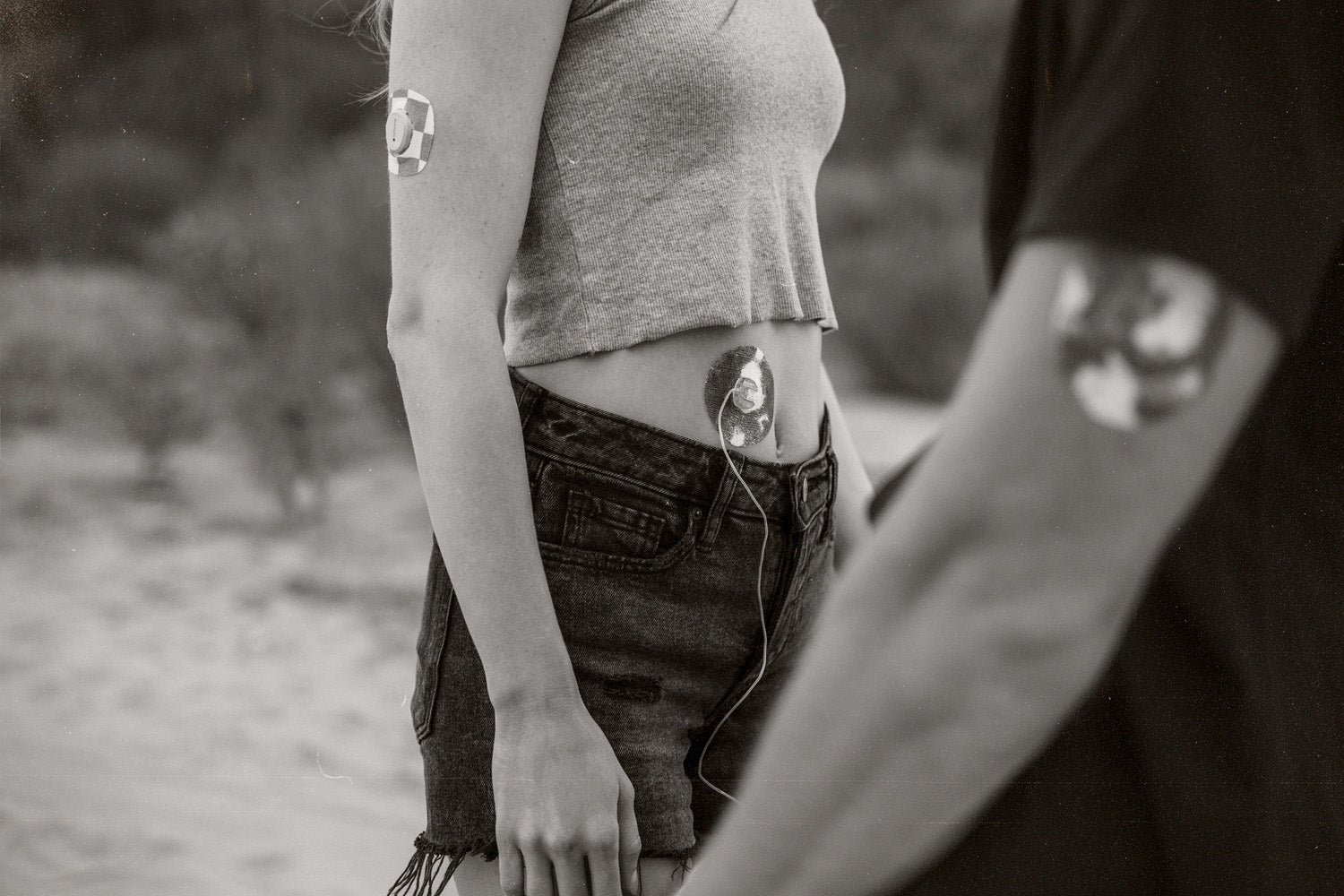 (Nguyễn Hiệp / unsplash)
(Nguyễn Hiệp / unsplash)
If you have a diabetes mellitus diagnosis, you have likely discussed your HbA1c (A1c) with your provider at length. Those who are in the process of getting diagnosed have probably heard the word tossed around but may not yet understand what it is.
Skin Grip is here to help everyone, regardless of where they are on their diabetes journey, to understand their Hba1c a little more. Knowledge is power, and we are all about empowering the diabetic community.
What is an HbA1c?
This medical test stands for Hemoglobin A1c. It is a measurement of glycated hemoglobin in your blood. If “glycated hemoglobin” sounds like a fantasy creature to you, allow us to explain. Hemoglobin is a part of your blood cells that carries oxygen. Sometimes, this hemoglobin can attach to sugar molecules in the blood called glucose. When this occurs, we call the sugary hemoglobin “glycated hemoglobin.”
By measuring how much of your hemoglobin is glycated, we can determine your average blood sugar over the past three months. This measurement is useful for determining whether or not an individual has elevated blood glucose levels, a key indicator of diabetes. After diagnosis, the A1c test is used to measure how well medications, insulin, and diet are affecting long-term disease management. Tracking the A1c over time allows doctors to adjust medication regimens to keep people with diabetes at normal blood glucose levels, which keeps them healthy.
What’s a good A1c?
A “normal” A1c should be below 5.7%. An A1c that measures above that level indicates chronic hyperglycemia. Between 5.7% and 6.4% are frequently described as “prediabetic.” Above 6.4% is a result that indicates diabetes. The higher your A1c, the greater your risk of developing complications of diabetes.
If you have been diagnosed with diabetes, you and your provider will likely set an A1c goal. For most people with diabetes, an A1c of approximately 6-7 will be selected, though individual factors can affect your exact goal.
Why does it matter?
Keeping your A1c down can help prevent severe complications of diabetes. While ketoacidosis is one of the most frequently discussed complications of diabetes, complications of chronically high blood glucose levels can emerge without ever entering ketoacidosis. These complications can include neuropathy, vision changes, kidney disease, atherosclerosis, heart disease, and more.
These complications can compound over time, leading to severe consequences as the condition progresses. Neuropathy can lead to injuries that go unnoticed, and damage to blood vessels from chronically high blood glucose levels causes poor wound healing. Wounds that remain unhealed for long periods of time risk becoming infected and gangrenous. This is the kind of scenario that leads to horror stories of limbs lost to diabetes.
The good news is that these complications can be prevented by good diabetes management. Working with providers to keep blood glucose levels within normal limits can prevent chronic complications and allow you to live a long and healthy life.
How do I keep my A1c low?
Your exact plan for meeting your A1c goal will be worked out between you and your provider, but the most important thing you can do is follow that plan. This includes checking your blood glucose regularly, managing blood sugars with insulin, and taking other medications as directed.
Additionally, keeping a healthy lifestyle by eating a nutritious diet and exercising regularly will help you stay healthy throughout your life. Healthy habits don’t just reduce your risk of complications from diabetes; they keep your entire body healthy by improving cardiac health, mental health, and keeping your bones and muscles strong.
Your provider may recommend using a continuous glucose monitor (CGM) to help you stay on top of your blood glucose levels. You may even pair your CGM with an insulin pump to manage your blood sugar without constant injections.
Using adhesive patches for your CGM can help make managing your blood sugar even easier. Skin Grip’s patches for the Freestyle Libre, Dexcom, and Guardian sensors keep your CGM secure and where it should be. Skin Grip’s tape for diabetic sensors can even be used with pumps like the Omnipod.
Skin Grip’s goal is to help people with diabetes live free, healthy, and empowered lives. We help our clients live without limits by keeping their devices secured and safe, regardless of where they are or what they’re doing. Whether you’re climbing a mountain or whitewater rafting, having a CGM shouldn’t hold you back.
Infographic
A blood test called HbA1c calculates your average blood sugar levels over the previous two to three months. It's a crucial tool for managing diabetes, as elevated HbA1c levels can indicate poor blood sugar control and increase the risk of diabetes-related complications. Understanding HbA1c and how it affects your diabetes is key to living a healthy and fulfilling life. Stay informed and take control of your diabetes with regular HbA1c testing and management.































